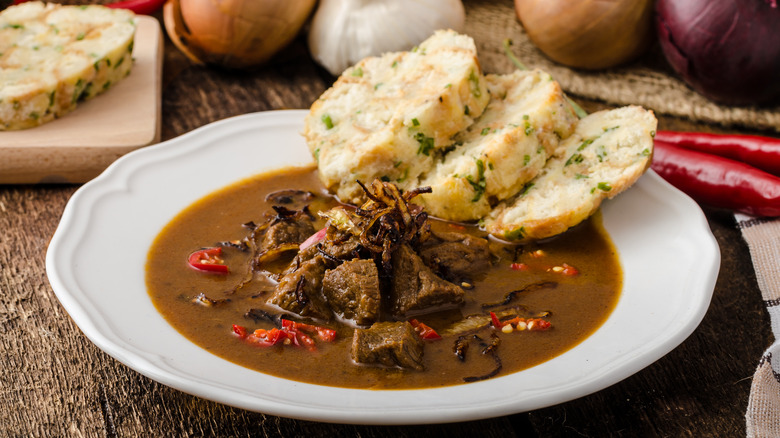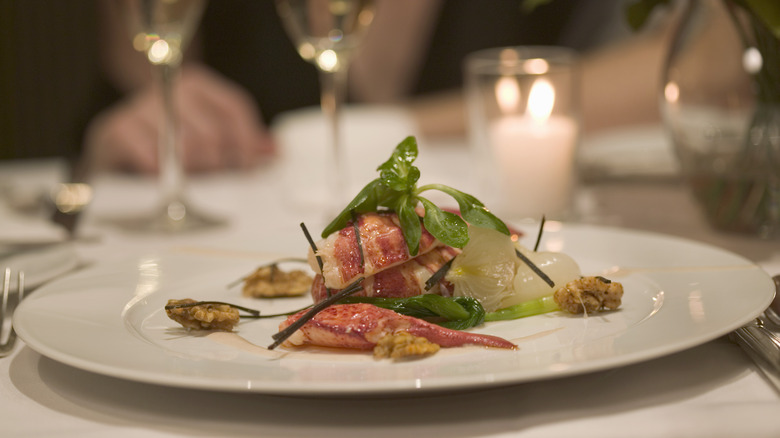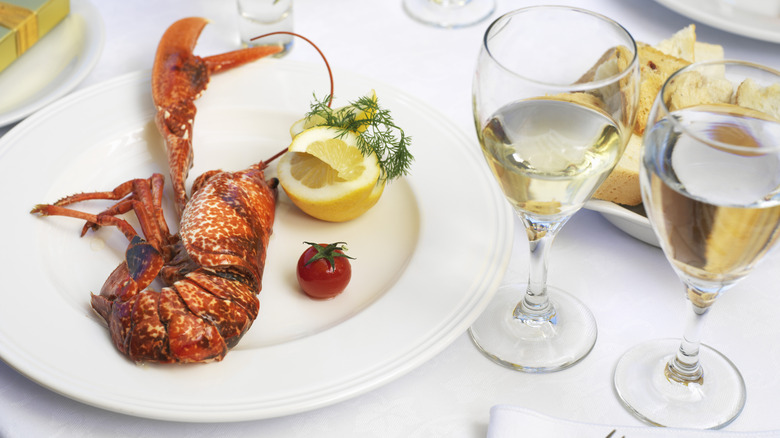The Strategic, Status-Driven Reason Restaurants Serve Food On Heavy Plates
If you often go out to eat at restaurants, you probably picked up on some tricks restaurants use to get you to spend more money. Even if you choose a reasonably priced restaurant and you know what you are going to order before you go in, there are ways that you could still end up spending more than you wanted to. It's not your fault because restaurant owners are masters at knowing how to use basic psychological tricks to get you to open your wallet.
You probably already know that fast-food joints and restaurants use a lot of red in their buildings because it stimulates hunger, and it's no secret that buying fountain drinks will add a good bit to your bill in the end. But were you aware that restaurants can get you to spend more just by offering you a real napkin, a heavy plate, and some hefty silverware?
Heavy plates make money
Restaurants use heavy plates, flatware, and real napkins for several reasons. One, they add a high-end and upscale appearance to the dining experience, making the food look more appealing and sophisticated. This sends a subtle message to diners that the food is worth a hefty price tag, making restaurant patrons more likely to buy meals with larger price tags.
The Sun says that heavier and larger plates can make portions look more substantial, which helps restaurants in two ways — it allows them to serve smaller portions, and it makes you think you are still hungry (and you may be) so that you will order dessert, thereby spending more money. Of course, there are some practical reasons for restaurants to use heavier plates, heftier utensils, and real napkins, and not all of them work to make you spend more, but they help the restaurant save money.
Heavy plates are a worthwhile investment
Heavy plates can help prevent spills and accidents, which saves the restaurant money by not having to remake dishes as often. These plates and heavier silverware are also more durable and resistant to chips, cracks, and other forms of damage, which is essential for restaurants that use them daily, ultimately saving on their bottom line because they won't have to replace their dishes as often. Heavier plates hold heat better than a thin plate, which is great for restaurants that warm plates before serving them.
According to Chef's Vision, restaurants often heat the plates so that the food is still hot when it gets to the table and stays hotter for longer. That enhances the dining experience and makes it less likely that diners will send the food back to the kitchen. And, finally, cloth napkins can be washed, rather than thrown out. In the long run, that saves more money because restaurants aren't having to repeatedly buy napkins — plus, it's better for the environment. When you boil it down, appearance, durability, and cost management are the main reasons restaurants invest in heavy dishes.


